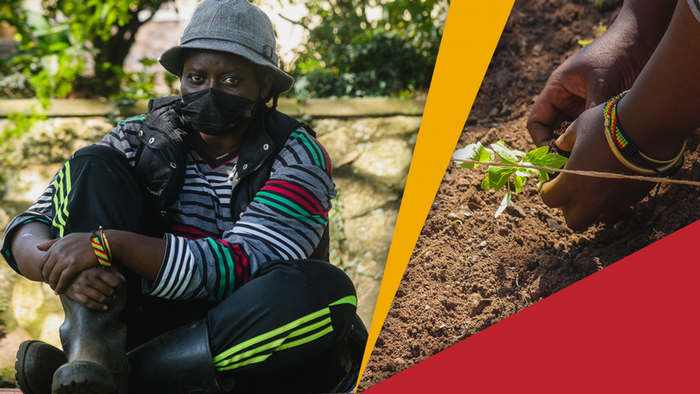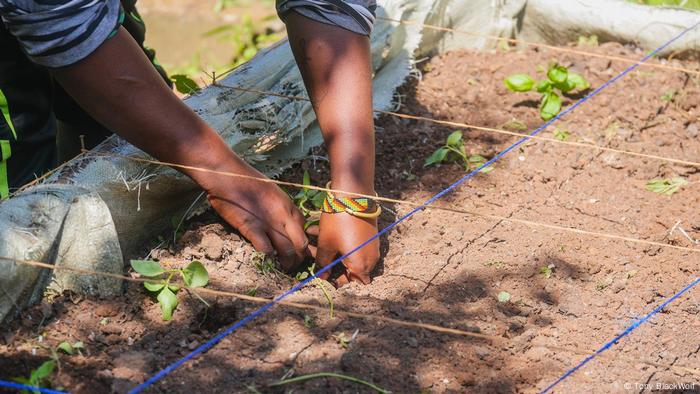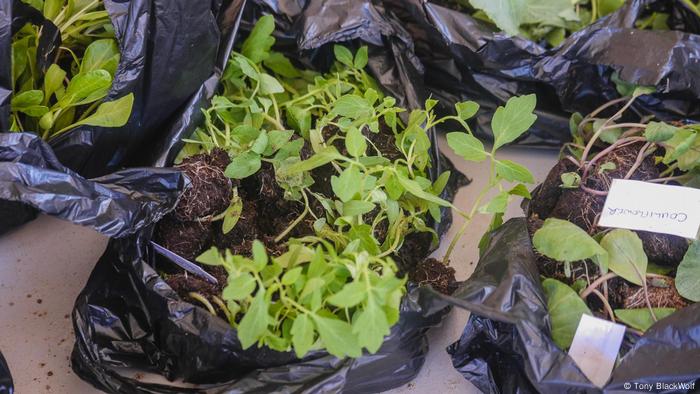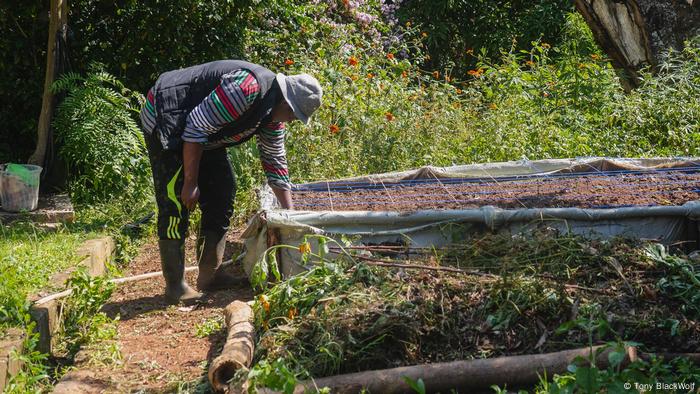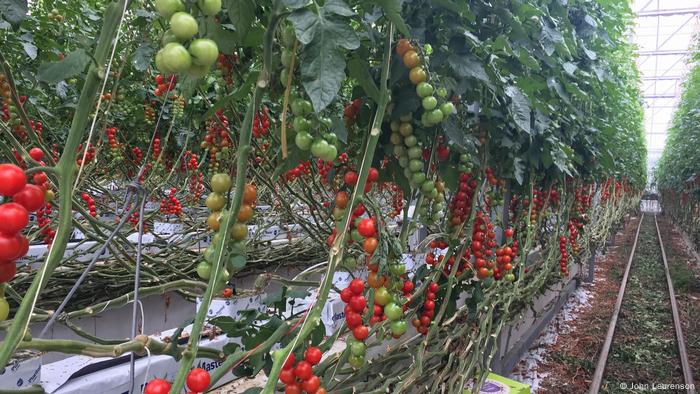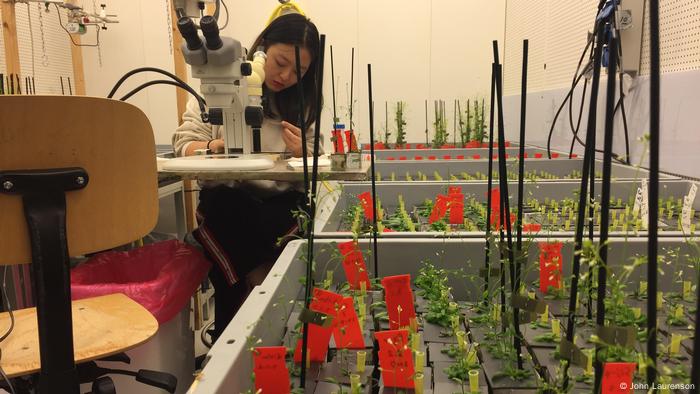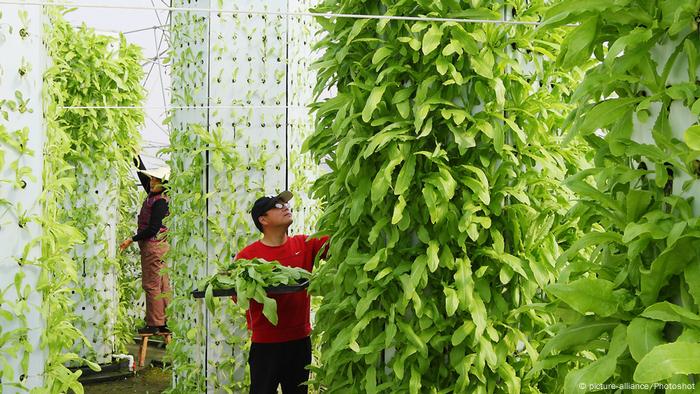David Akin
GLOBAL NEWS
WINDSOR, ON — Ask a campaigning NDP leader if they would support this party or that party in a potential minority government and every NDP leader is trained to say the same thing: They’re running to be prime minister.

© THE CANADIAN PRESS/Paul Chiasson
NDP leader Jagmeet Singh walks along the waterfront in Windsor, Ont. on Wednesday, August 25, 2021.
It’s what Jack Layton said. It’s what Thomas Mulcair said. And during a campaign stop here Wednesday, it’s what Jagmeet Singh said.
"I'm running to form government,” Singh told reporters here. "I'm running to be the prime minister because I've seen in a minority that New Democrats made life better for people. If we were not there, if we were not present in Ottawa … people would have been far worse off in this pandemic. And that's motivated me more than ever to be the next prime minister so we can actually help people out."
Read more: NOTEBOOK: Jagmeet vs. Justin in a city where an election likely changes little
Singh’s response was prompted by a reporter’s query about his intentions if the current general election results in a minority Conservative government led by Erin O’Toole. Voters already know what Singh’s NDP did when Justin Trudeau led a Liberal minority government: It largely supported the government on confidence matters but withheld support until it could say it achieved certain objectives — increased sick leave benefits or pandemic benefits to students — that are important to those who vote New Democrat.
These negotiations with a minority prime minister can be tricky. One has to know when you’ve got all you’re going to get from a minority PM. And, at some point, if one pushes to far, a minority PM could just find another parliamentary partner or chance a confidence vote and an election.
The late Jack Layton and his team have been widely credited for skillfully negotiating with both a Liberal and Conservative minority prime minister, Paul Martin and Stephen Harper. Only once did Layton ask for more than a prime minister was ready to give.
That was in 2005, when Layton could not accept what the Martin government was offering on health care. Martin called Layton’s bluff, the country went to the polls, and that’s how we had Stephen Harper.
Those who have been involved in minority government negotiations say any participating leader can only go as far as his base will allow him
And that rule largely prevented Singh from entertaining any scenario in which he would have propped up former Conservative leader Andrew Scheer, had Scheer ended up leading a minority Conservative government after the 2019 election. Scheer’s personal values on so-called social conservative issues such as abortion, same-sex marriage, right-to-die legislation and so on were just too far from the NDP base and so, even before they started counting the ballots in 2019, Singh had declared that working with Scheer would be a non-starter.
Was that wise? Who knows. But Singh did see the NDP caucus cut down from 39 members to 24 members and, in the process, lost a significant amount of political capital. Scheer, on the other hand, won the popular vote and increased the Conservative caucus by 20 MPs. (And then lost his job! But that's another story ... )
This time, though, it may be different if Singh finds himself facing a Conservative minority led by Erin O'Toole.
For one thing, Singh is campaigning well so far in this election and all polls have consistently shown the NDP in position to win seats rather than lose them as it did in 2019. It might even add back the 15 members to its caucus it lost in 2019. And that will give Singh more political capital and freedom in any negotiations.
Second, Singh, when asked Wednesday here, did not — as he did in 2019 — rule out working with the Conservative leader. He now sounds as if he is keeping all his options open should he be leading a minority government or working with one as a supporting partner. Singh did tell the Toronto Star's editorial board in February, though, he would not work with O'Toole. But now, he's less equivocal.
"We'll look at that when it happens and make decisions that are in the best interest of Canadians," Singh said Wednesday.
Finally, there is O’Toole himself and a party that is very different than the one in 2019. Both may be more palatable to the NDP base than 2019.
And the Conservatives are doing their darnedest to appeal to working class voters with policies that could have come right from NDP playbooks of Parliaments past. On Monday, for example, O’Toole said he'd introduce legislation that would guarantee at least one spot on the board of directors of any federally regulated company for worker representatives. Then he vowed to change bankruptcy laws so that pensioners would have a greater claim to bankrupt company’s assets, something New Democrats fought hard for when both Nortel and Sears went out of business.
On top of that, O’Toole has often introduced himself as the pro-choice son of a General Motors worker. The Conservatives may not get the endorsement of union leaders but they are working hard to get the votes of union rank-and-file.
And that should that make it much easier for Singh and O’Toole to come to some understanding in a future Conservative (or NDP!) minority parliament.
It’s what Jack Layton said. It’s what Thomas Mulcair said. And during a campaign stop here Wednesday, it’s what Jagmeet Singh said.
"I'm running to form government,” Singh told reporters here. "I'm running to be the prime minister because I've seen in a minority that New Democrats made life better for people. If we were not there, if we were not present in Ottawa … people would have been far worse off in this pandemic. And that's motivated me more than ever to be the next prime minister so we can actually help people out."
Read more: NOTEBOOK: Jagmeet vs. Justin in a city where an election likely changes little
Singh’s response was prompted by a reporter’s query about his intentions if the current general election results in a minority Conservative government led by Erin O’Toole. Voters already know what Singh’s NDP did when Justin Trudeau led a Liberal minority government: It largely supported the government on confidence matters but withheld support until it could say it achieved certain objectives — increased sick leave benefits or pandemic benefits to students — that are important to those who vote New Democrat.
These negotiations with a minority prime minister can be tricky. One has to know when you’ve got all you’re going to get from a minority PM. And, at some point, if one pushes to far, a minority PM could just find another parliamentary partner or chance a confidence vote and an election.
The late Jack Layton and his team have been widely credited for skillfully negotiating with both a Liberal and Conservative minority prime minister, Paul Martin and Stephen Harper. Only once did Layton ask for more than a prime minister was ready to give.
That was in 2005, when Layton could not accept what the Martin government was offering on health care. Martin called Layton’s bluff, the country went to the polls, and that’s how we had Stephen Harper.
Those who have been involved in minority government negotiations say any participating leader can only go as far as his base will allow him
And that rule largely prevented Singh from entertaining any scenario in which he would have propped up former Conservative leader Andrew Scheer, had Scheer ended up leading a minority Conservative government after the 2019 election. Scheer’s personal values on so-called social conservative issues such as abortion, same-sex marriage, right-to-die legislation and so on were just too far from the NDP base and so, even before they started counting the ballots in 2019, Singh had declared that working with Scheer would be a non-starter.
Was that wise? Who knows. But Singh did see the NDP caucus cut down from 39 members to 24 members and, in the process, lost a significant amount of political capital. Scheer, on the other hand, won the popular vote and increased the Conservative caucus by 20 MPs. (And then lost his job! But that's another story ... )
This time, though, it may be different if Singh finds himself facing a Conservative minority led by Erin O'Toole.
For one thing, Singh is campaigning well so far in this election and all polls have consistently shown the NDP in position to win seats rather than lose them as it did in 2019. It might even add back the 15 members to its caucus it lost in 2019. And that will give Singh more political capital and freedom in any negotiations.
Second, Singh, when asked Wednesday here, did not — as he did in 2019 — rule out working with the Conservative leader. He now sounds as if he is keeping all his options open should he be leading a minority government or working with one as a supporting partner. Singh did tell the Toronto Star's editorial board in February, though, he would not work with O'Toole. But now, he's less equivocal.
"We'll look at that when it happens and make decisions that are in the best interest of Canadians," Singh said Wednesday.
Finally, there is O’Toole himself and a party that is very different than the one in 2019. Both may be more palatable to the NDP base than 2019.
And the Conservatives are doing their darnedest to appeal to working class voters with policies that could have come right from NDP playbooks of Parliaments past. On Monday, for example, O’Toole said he'd introduce legislation that would guarantee at least one spot on the board of directors of any federally regulated company for worker representatives. Then he vowed to change bankruptcy laws so that pensioners would have a greater claim to bankrupt company’s assets, something New Democrats fought hard for when both Nortel and Sears went out of business.
On top of that, O’Toole has often introduced himself as the pro-choice son of a General Motors worker. The Conservatives may not get the endorsement of union leaders but they are working hard to get the votes of union rank-and-file.
And that should that make it much easier for Singh and O’Toole to come to some understanding in a future Conservative (or NDP!) minority parliament.
Duration: 01:51
The Conservative campaign made a brief stop in Brantford, Ont. today where Erin O’Toole promised to boost health care funding if elected, pledging $60 billion over the next decade with a big focus on mental health services. The Conservatives seem to be crossing over into typical NDP territory. In recent days O’Toole has been making a pitch to unionized workers. And as Mike Le Couteur reports, it’s all about securing a broader base.
Adam Zivo: A pro-labour Conservative party invading NDP turf is hardly surprising
Embracing government intervention more than anyone expected, the Conservative platform says the party would continue pandemic-related stimulus spending for two years before shifting into deficit-reduction mode.

© Provided by National Post Erin O'Toole listens to a reporter's question during a news conference on August 23, 2021 in Ottawa, Canada.
The platform also contains several pro-labour policies that would typically be associated with the NDP, suggesting that reform conservatism , which sees a role for government in supporting those left behind by laissez-faire capitalism, is becoming more influential within Canada.
Reform conservatism acknowledges that unrestricted markets can sometimes unfairly deprive citizens of opportunities to flourish and has grown increasingly influential since the Trump era. It is currently advocated by Mark Rubio in the United States (who calls it “common good capitalism”) and Jason Kenney in Alberta.
Its slow ascendancy not only reflects voter frustration with worsening economic inequality, but also a rejection of the growing frivolity of progressive politics, which has become increasingly alienated from working class values.
Reflecting reformist views, the Conservatives have proposed a “Canada Job Surge Plan,” which would pay 25 to 50 per cent of the salaries of new hires for six months following the end of the Canadian Emergency Wage Subsidy. The Conservatives have also proposed increasing the Canada Workers Benefit, as well as an expanded employment insurance plan that would kick in when provinces go into recession, boosting salary replacement from 55 per cent to 75 per cent.
The platform also contains several pro-labour policies that would typically be associated with the NDP, suggesting that reform conservatism , which sees a role for government in supporting those left behind by laissez-faire capitalism, is becoming more influential within Canada.
Reform conservatism acknowledges that unrestricted markets can sometimes unfairly deprive citizens of opportunities to flourish and has grown increasingly influential since the Trump era. It is currently advocated by Mark Rubio in the United States (who calls it “common good capitalism”) and Jason Kenney in Alberta.
Its slow ascendancy not only reflects voter frustration with worsening economic inequality, but also a rejection of the growing frivolity of progressive politics, which has become increasingly alienated from working class values.
Reflecting reformist views, the Conservatives have proposed a “Canada Job Surge Plan,” which would pay 25 to 50 per cent of the salaries of new hires for six months following the end of the Canadian Emergency Wage Subsidy. The Conservatives have also proposed increasing the Canada Workers Benefit, as well as an expanded employment insurance plan that would kick in when provinces go into recession, boosting salary replacement from 55 per cent to 75 per cent.
The Conservatives have said that they will work with unions to alter the Canada Labour Code so that they can have a more level playing field against multinationals. They have similarly promised to: make it easier to organize unions within firms that have a history of anti-labour activity; force companies to provide gig workers with financial contributions equivalent to CPP and EI; and ensure that large companies include worker representatives within their boards of directors.
These kinds of policies are not typically associated with conservative politics. Tackling unemployment through wage subsidization? Supporting businesses through generous financial aid rather than tax cuts? Fortifying the social safety net? Defending Canada’s labour movement? Giving workers a say in corporate governance?
It seems that the Conservatives have enthusiastically invaded the NDP’s turf.
Yet, unlike leftist approaches, reform conservatism is focussed on providing equality of opportunity, rather than equality of outcome — ensuring that hard work and personal responsibility remain key factors for success. Relatedly, it does not vilify the wealthy, since wealth-generation is still attributed to personal virtue, and while it believes that government interventions can be constructive, it is nonetheless attentive to fiscal discipline and individual freedoms.
The conservative embrace of labour unions and social spending is based on the belief that everyone who wants to move upward through hard work should be given a fair opportunity to do so — and this lionization of hard work remains a conservative value.
But why would working class voters think that conservatives can be better friends to them than socialists? It boils down to the uneasy dynamics that underpins contemporary progressive politics, which, broadly speaking, is an alliance between: the working class — often marginalized, earthy and pragmatic — and champagne socialists — often privileged, idealistic and grandiose.
Over the past two decades, growth in the knowledge economy has boosted the influence of the latter, aligning progressive politics with economic and cultural privilege. This trend is epitomized by the ascendance of “bourgeois bohemians” or “BoBos” ( a term recently popularized by David Brooks in The Atlantic ), who are the kind of people who advocate for the working class but would be mortified visiting a trailer park — aka: they want to be society’s saviours but condescend to people unfamiliar with their elite culture (i.e. post-industrial lofts, pretentious gastronomy, spicy Twitter essays).
In response, many working class voters have migrated to conservative circles where they feel culturally respected — with Trumpism being a messy example of that.
Conservative politicians have traditionally embraced these voters through pugilistic anti-elite rhetoric that, while emotionally satisfying, offers few actual solutions to working class woes. Trump’s failure to improve the rust belt’s economic conditions comes to mind, as does Maxime Berniers’ angry politicking.
In this context, the Conservative platform seems to treat the pandemic as an opportunity to more constructively pivot Canadian conservatism towards the working class — capturing disadvantaged voters who feel alienated by progressive elitism.
Should this reorientation succeed, an important question will be whether the Conservatives can fully reconcile their pro-business and pro-labour wings. How do you navigate between competing forces that disagree on the size and role of government?
Maintaining peace between these two factions would likely be doable in the short term, when higher spending is justified by the pandemic. Unlike the NDP, though, the Conservatives at least recognize that spending needs to be reigned in, but what would happen when cuts pit business against labour? It’s an interesting thing to think about, but likely too speculative at this point.
When Conservative leader Erin O’Toole first declared he was betting on union support last fall many were surprised, while others were skeptical. Yet, of all the political shifts created by the pandemic, the rise of a pro-labour Conservative party is in some ways not very surprising at all.







